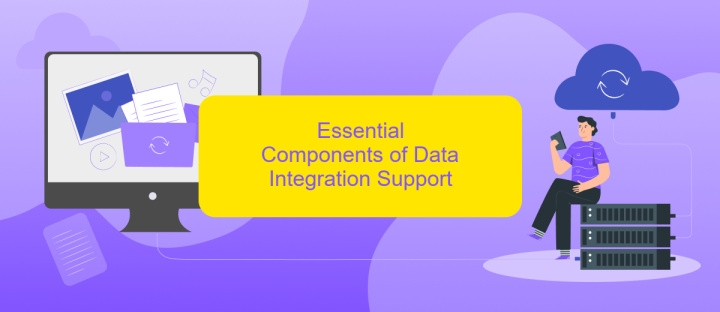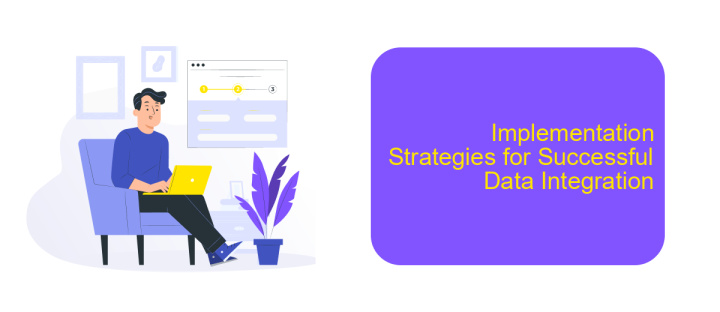Data Integration Support
Data integration support is essential for businesses looking to streamline operations and make informed decisions. By consolidating data from various sources into a unified view, organizations can enhance data quality, improve accessibility, and foster better collaboration. This article explores the key benefits, challenges, and best practices in implementing effective data integration support systems.
Introduction: The Importance of Data Integration
Data integration is a critical component for modern businesses looking to leverage their data effectively. As organizations accumulate vast amounts of data from various sources, the ability to integrate this data seamlessly becomes essential for informed decision-making and operational efficiency.
- Streamlines data from multiple sources into a unified view
- Enhances data accuracy and consistency
- Facilitates real-time data access and analytics
- Improves collaboration across departments
- Supports compliance with data governance standards
Services like ApiX-Drive play a crucial role in simplifying data integration processes. By providing user-friendly tools to connect various applications and automate data workflows, ApiX-Drive enables businesses to integrate data without extensive technical expertise. This not only saves time but also ensures that data is readily available for analysis and decision-making, thereby driving business growth and innovation.
Benefits of Comprehensive Data Integration Support

Comprehensive data integration support offers numerous benefits, enhancing the efficiency and effectiveness of business operations. By seamlessly connecting disparate data sources, organizations can achieve real-time data synchronization, reducing errors and ensuring data consistency. This holistic approach to data integration also facilitates better decision-making by providing a unified view of data, enabling businesses to identify trends, uncover insights, and make informed choices with confidence.
Moreover, utilizing advanced tools like ApiX-Drive can significantly streamline the integration process. ApiX-Drive offers a user-friendly interface and robust features that simplify the setup and management of integrations, even for non-technical users. This not only saves time and resources but also allows businesses to focus on their core activities without worrying about data silos or compatibility issues. In essence, comprehensive data integration support, bolstered by powerful tools like ApiX-Drive, empowers organizations to harness the full potential of their data, driving growth and innovation.
Essential Components of Data Integration Support

Data integration support is crucial for ensuring smooth and efficient operations within an organization. By consolidating data from various sources, businesses can achieve a unified view of their information, enhancing decision-making processes and operational efficiency.
- Data Extraction: This involves retrieving data from various sources, such as databases, APIs, and flat files. Tools like ApiX-Drive can simplify this process by automating data extraction from multiple platforms.
- Data Transformation: Once data is extracted, it needs to be transformed into a consistent format. This may involve cleaning, filtering, and aggregating data to ensure it is usable for analysis and reporting.
- Data Loading: The final step is loading the transformed data into a target system, such as a data warehouse or a business intelligence tool. ApiX-Drive can facilitate this by providing seamless integration with various data destinations.
Effective data integration support requires a combination of robust tools and best practices. Leveraging services like ApiX-Drive can streamline the integration process, allowing organizations to focus on deriving actionable insights from their consolidated data. By prioritizing these essential components, businesses can ensure their data integration efforts are both efficient and impactful.
Implementation Strategies for Successful Data Integration

Successful data integration requires careful planning and execution. The first step is to thoroughly understand the data sources and the specific needs of the organization. This understanding helps in selecting the right tools and technologies that align with the organization's goals and infrastructure.
Next, it's crucial to establish a robust data governance framework. This involves setting clear policies and procedures for data management, ensuring data quality, and maintaining data security. A well-defined governance framework minimizes risks and enhances the reliability of integrated data.
- Choose the right data integration tools, such as ApiX-Drive, to automate and streamline the integration process.
- Implement data mapping and transformation techniques to ensure data consistency across different systems.
- Regularly monitor and maintain the integrated data to address any issues promptly.
Finally, continuous improvement is key to successful data integration. Regularly review and update integration strategies to adapt to changing business needs and technological advancements. By following these strategies, organizations can achieve seamless and efficient data integration, driving better decision-making and operational efficiency.
- Automate the work of an online store or landing
- Empower through integration
- Don't spend money on programmers and integrators
- Save time by automating routine tasks
Conclusion: The Power of Unified Data
Data integration is a powerful tool that enables organizations to unify disparate data sources, providing a comprehensive view of their operations. By leveraging data integration, businesses can enhance decision-making, streamline processes, and improve overall efficiency. The ability to seamlessly connect various data points not only drives operational excellence but also fosters innovation and growth.
Services like ApiX-Drive play a crucial role in simplifying the data integration process. ApiX-Drive offers a user-friendly interface and robust features that allow businesses to effortlessly connect different applications and automate workflows. This not only saves time and resources but also ensures data consistency and accuracy. Embracing unified data through effective integration solutions like ApiX-Drive empowers organizations to unlock the full potential of their data, leading to more informed decisions and sustained success.
FAQ
What is data integration and why is it important?
How can I ensure the security of my data during integration?
What are the common challenges in data integration?
How can I automate data integration processes?
What should I look for in a data integration tool?
Apix-Drive is a universal tool that will quickly streamline any workflow, freeing you from routine and possible financial losses. Try ApiX-Drive in action and see how useful it is for you personally. In the meantime, when you are setting up connections between systems, think about where you are investing your free time, because now you will have much more of it.


